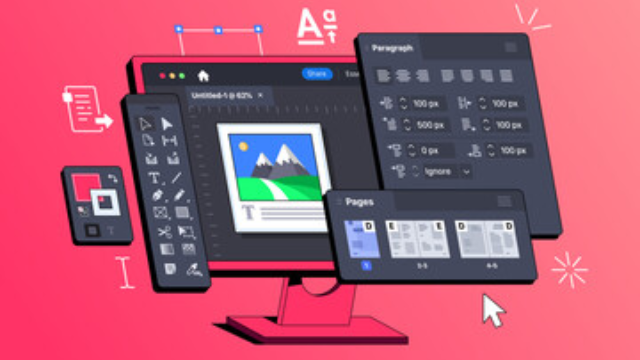Are you curious about what typography in HTML is all about? Well, you’ve come to the right place! In this article, we’ll uncover the ins and outs of typography in HTML, and why it’s so important in web design. From understanding the key elements of typography to choosing the perfect fonts for your website, we’ll guide you through the process of formatting text with HTML tags and enhancing readability with clever typography techniques. Get ready to bring your website’s text to life!
Importance of Typography in Web Design
To create an effective web design, you need to understand the importance of typography in HTML. Typography trends play a crucial role in shaping the overall user experience of a website. The way text is presented can greatly impact how users perceive and interact with the content.
Typography trends constantly evolve, reflecting changes in design aesthetics and user preferences. Bold and eye-catching fonts are often used to grab attention and convey important information. On the other hand, minimalist and clean typography is favored for a sleek and modern look. By staying updated with typography trends, you can ensure that your website remains visually appealing and engaging to users.
The impact of typography on user experience cannot be overlooked. The right choice of font, spacing, and alignment can enhance readability, making it easier for users to navigate and understand the content. Conversely, poor typography choices can lead to confusion and frustration, causing users to leave the website.
In addition to aesthetics and readability, typography also plays a role in conveying the brand identity and establishing a consistent visual language. Consistent typography across all pages and platforms helps in reinforcing the brand image and creating a cohesive user experience.
Elements of Typography in HTML
How can you incorporate typography into your HTML to enhance the overall user experience of your website? Typography plays a crucial role in web design, as it helps to create a visually appealing and readable interface for users. By using the right typography techniques, you can ensure that your website stands out and leaves a lasting impression on visitors. Here are three elements of typography in HTML that you should consider:
- Font selection: Choose fonts that align with the tone and purpose of your website. Consider current typography trends and select fonts that are easy to read on different devices and screen sizes.
- Font size and spacing: Pay attention to the size of your fonts, making sure they are legible and do not strain the reader’s eyes. Use appropriate spacing between letters, words, and paragraphs to improve readability.
- Hierarchy and emphasis: Establish a clear hierarchy by using different font sizes, weights, and styles to guide users through your content. Use emphasis techniques such as bold, italics, and underline to draw attention to important information.
Choosing the Right Fonts for Your Website
When choosing the right fonts for your website, it is important to consider the tone and purpose of your website, as well as current typography trends. Typography trends play a significant role in the overall impact of your font choice on your website. Fonts can convey emotions, evoke certain moods, and enhance the user experience.
First, consider the tone and purpose of your website. Is it a professional website? A fun and playful one? A minimalist and modern site? The fonts you choose should align with the intended tone and purpose. For example, a professional website may benefit from clean and classic fonts, while a fun and playful website may opt for more whimsical and decorative fonts.
Next, keep up with current typography trends. Just like any other design element, typography evolves over time. Staying updated with the latest trends can help your website look fresh and modern. For instance, currently, sans-serif fonts are widely popular due to their clean and minimalist appearance. However, it’s important not to blindly follow trends and to choose fonts that still fit your website’s identity and goals.
Formatting Text With HTML Tags
When choosing the right fonts for your website, it is important to consider the tone and purpose of your website, as well as current typography trends. Additionally, formatting text with HTML tags allows you to enhance the visual style and structure of your content.
Here are three ways you can format text with HTML tags to improve the overall look and feel of your website:
- Text Alignment: Use the
<p>tag to create paragraphs and align your text to the left, right, or center of the page. This helps to create a clean and organized layout, making it easier for readers to follow along. - Styling Headlines: Headlines play a crucial role in attracting readers’ attention. By using the appropriate HTML tags such as
<h1>,<h2>, and<h3>, you can differentiate the importance of each headline. Experiment with different font sizes, colors, and styles to make your headlines visually appealing. - Emphasizing Text: HTML tags like
<strong>and<em>can be used to highlight important words or phrases within your content. The<strong>tag makes the text bold, while the<em>tag italicizes it. This draws attention to key points and makes your content more engaging.
Enhancing Readability With Typography Techniques
To enhance the readability of your website, employ typography techniques that utilize appropriate font choices, sizes, and spacing. As you consider the design of your website, it’s important to stay up-to-date with current typography trends. By understanding and implementing these trends, you can create visually appealing and reader-friendly content.
One key aspect of typography is typographic hierarchy. This refers to the arrangement and organization of different elements of text to guide readers through the content. By using varying font sizes, weights, and styles, you can establish a clear hierarchy that helps readers navigate your website easily. For example, you might use a larger and bolder font for headings, while using a smaller and lighter font for body text. This contrast in typographic elements creates a visual hierarchy that makes it easier for readers to scan and understand your content.
Another technique for enhancing readability is to choose fonts that are easy to read on different devices and screen sizes. Consider the legibility of a font, especially at smaller sizes or on mobile devices. Additionally, pay attention to line spacing (leading) and letter spacing (tracking) to ensure comfortable reading experiences.
Best Practices for Typography in HTML
When it comes to typography in HTML, font selection plays a crucial role in creating a visually appealing and readable text. Consider choosing fonts that are easy to read and align with the overall design of your website. Additionally, paying attention to proper line spacing can greatly enhance the readability of your content, ensuring that users can effortlessly navigate through your text. Ultimately, the key to effective typography in HTML lies in prioritizing readability, as it is the foundation for delivering your message clearly to your audience.
Font Selection Tips
To improve the readability and aesthetic appeal of your HTML typography, it is important to consider font selection tips. Choosing the right fonts can greatly enhance the overall design and user experience of your website. Here are three font selection tips to keep in mind:
- Font Pairing: When selecting fonts, it is important to choose fonts that complement each other. Pairing fonts that have contrasting styles, such as a serif font with a sans-serif font, can create visual interest and hierarchy in your typography.
- Typography Trends: Stay updated with the latest typography trends to ensure your website looks modern and current. Keep an eye on popular web design blogs and websites for inspiration and ideas on font selection.
- Readability: Prioritize readability above all else. Choose fonts that are easy to read on different devices and screen sizes. Avoid overly decorative or intricate fonts that may hinder legibility.
Proper Line Spacing
Ensure proper line spacing in your HTML typography for optimal readability and visual appeal. When it comes to vertical alignment, it is important to give your text enough room to breathe. Avoid cramming lines of text too close together, as this can make it difficult for readers to distinguish between individual lines. On the other hand, excessive line spacing can create unnecessary gaps that disrupt the flow of reading. Finding the right balance is key. Additionally, consider adjusting the letter spacing in your typography. This can help improve legibility, especially for small or condensed fonts. Be mindful not to overdo it, as excessive letter spacing can make the text look disjointed. By paying attention to both vertical alignment and letter spacing, you can create a visually pleasing and easy-to-read typography in your HTML.
Importance of Readability
Improve the readability of your HTML typography by implementing best practices that prioritize clarity and legibility. To ensure that your text is easy to read and understand, consider the following typography techniques:
- Choose the right font: Select a font that is clear and legible, avoiding decorative or overly stylized fonts that can be difficult to read.
- Use appropriate font size: Opt for a font size that is neither too small nor too large. Too small, and it becomes challenging to read; too large, and it disrupts the visual hierarchy of your content.
- Pay attention to line length: Aim for a comfortable line length that allows the reader’s eyes to effortlessly move from one line to the next. Long lines can be tiring to read, while short lines can disrupt the flow.



